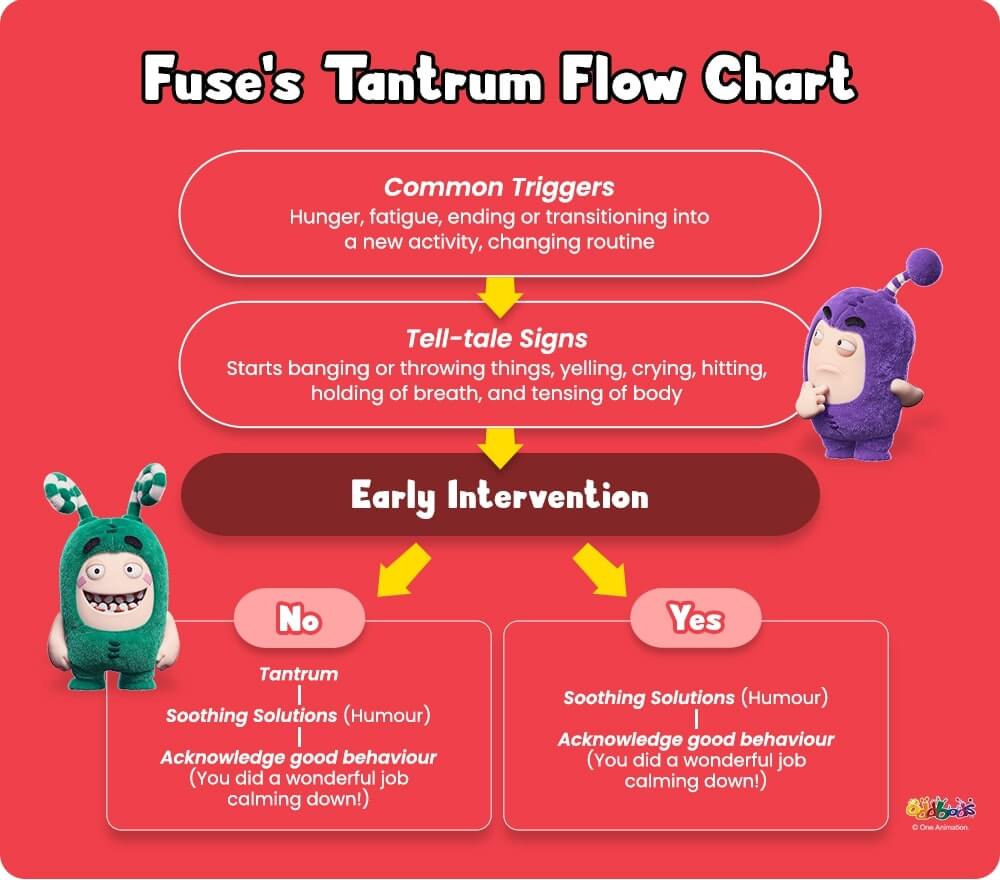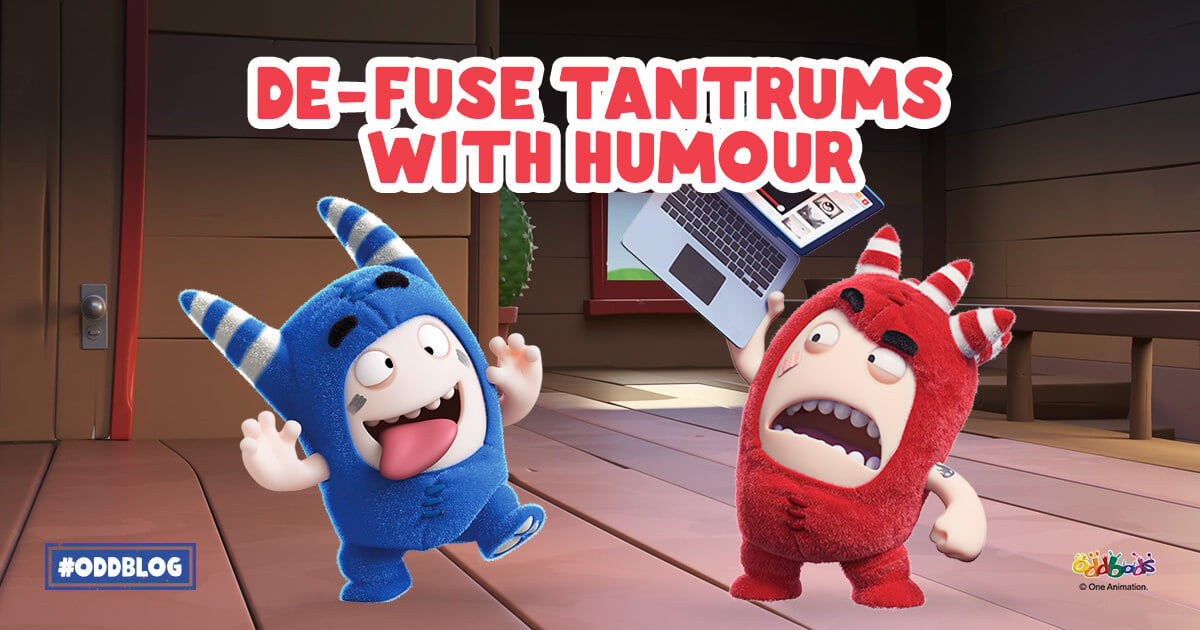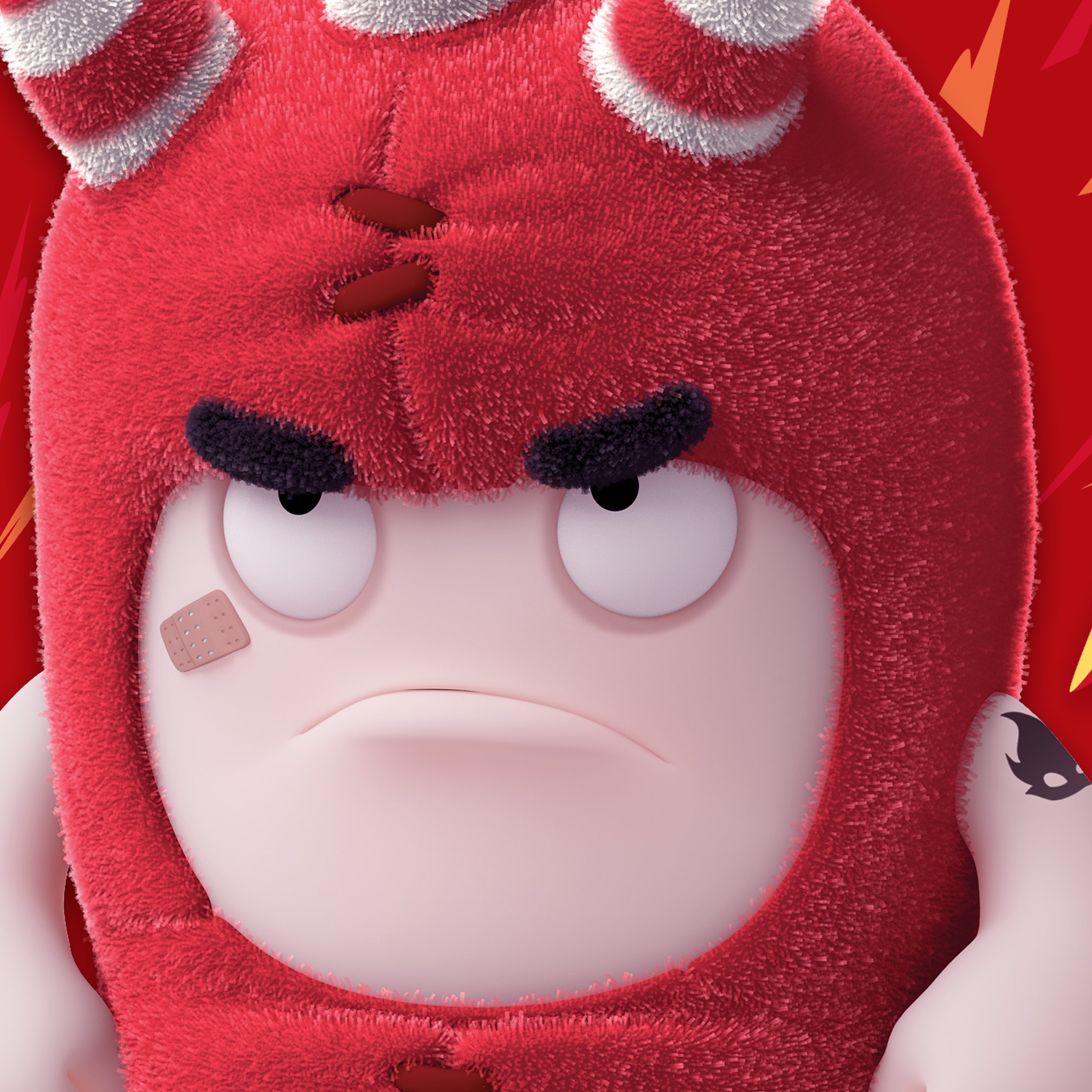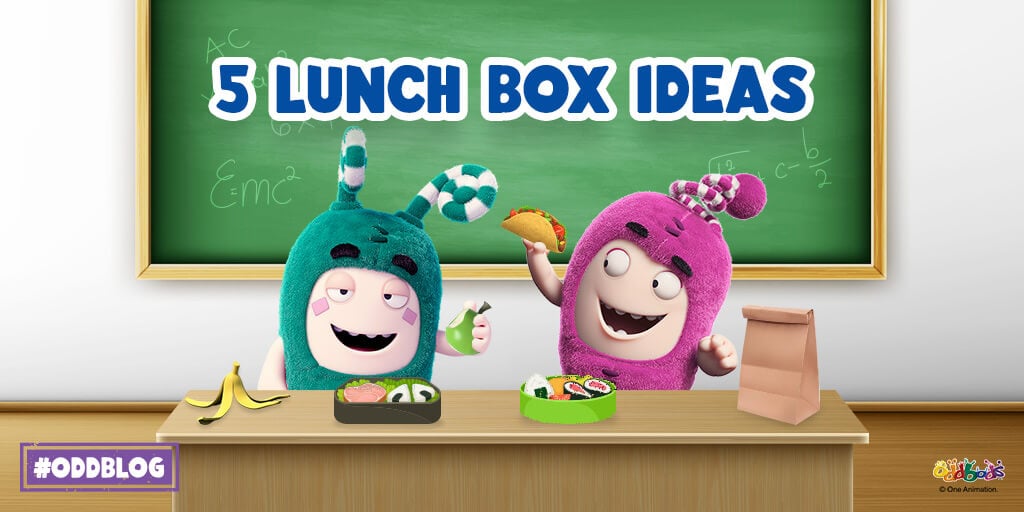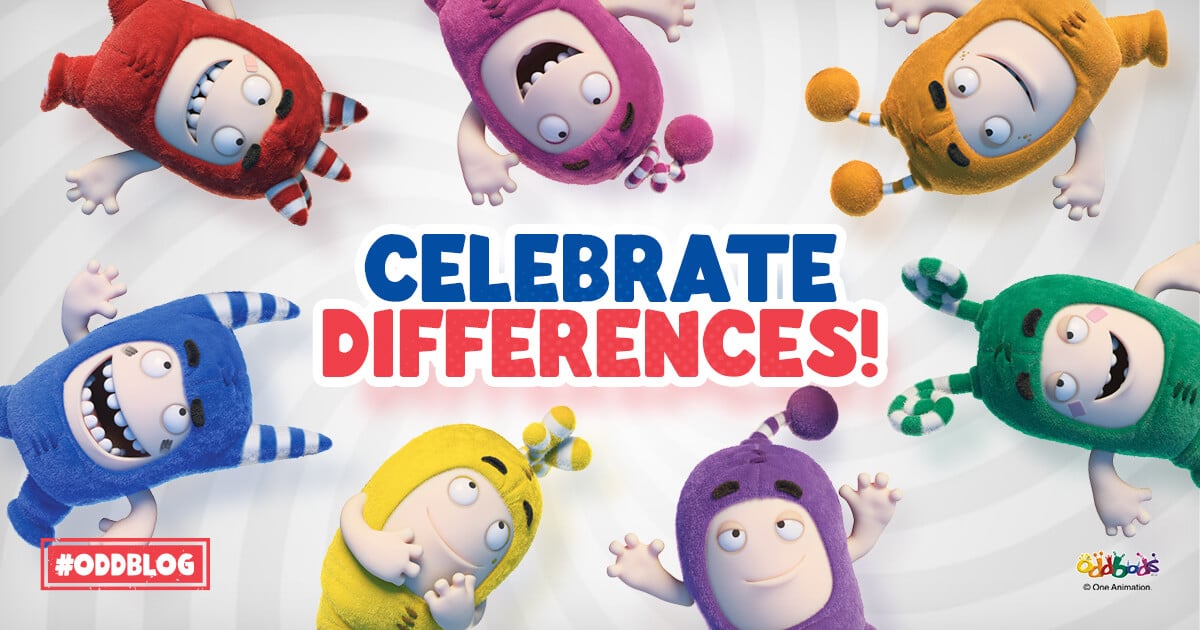Have you ever been thrown off your parenting game by a meltdown? Was your kid lying on the floor, crying and screaming (often at the top of their lungs and in a very public place), and even biting or kicking? Yes? What you have in your hands is the notorious temper tantrum.
Much like our grumpy little red Oddbods, Fuse, your little one is not throwing a tantrum on purpose (well, most of the time). Rather, it’s a result of being unable to fully articulate their feelings. Tantrums are usually a way to express frustration, demand attention, get something like a toy or candy, or avoid or escape an activity they don’t fancy, say going to bed or bath time.
The first step to diffusing a meltdown is to ensure that you are calm. Be like our patient and peaceful Newt by taking a deep breath and reminding yourself that your little one is still learning how to deal with their feelings — it’s your job to teach and guide them how to weather through it. Once you’re in check, go forth and be a good humour model!
Tell a Joke

Crisis averted with a funny joke! Photo by RODNAE Productions .
If your little one is turning red in the face from screaming over her sunny side up eggs (she wanted scrambled today which she didn’t like yesterday), distract her with a joke. ‘Do you know what the egg said to the clown?’ may get her to stop screaming to look at you. Deliver the punchline ‘You crack me up!’ and finish off with a hearty laugh while encouraging her to laugh along with you. She may not eat her eggs (or understand the joke) but it will distract her long enough for her to stop screaming.
Use Physical Humour
Kids love physical humour so the next time your little one is rolling around on the floor because you wouldn’t let them stick crayons in the dog’s ear, try ‘tripping’ over something or ‘walking’ into the wall and exaggeratedly holding your forehead.
Seeing this comical scene may get him to stop crying and induce some laughter instead — he may even start to imitate you. Follow through by getting him to ‘help’ you to further distract him with ‘Can you hold mommy’s hand and help mommy go to your room safely?’. Two birds with one stone! You successfully diffused his tantrum and got him to go to his bedroom.

Surprise with Something Unexpectedly Funny
If you find yourself wrestling with your mini-WWE contender over a nappy change, do something unexpected. Instead of forcing his nappies on him, stop, put the diaper on your head instead and say ‘Is this where the nappy goes?’. The unexpected turn of events may get him to stop screaming to pay attention to you. If he’s still fussing, put the nappy on something else like his teddy to encourage him to show you that the nappy should go on him.
You can use the same method to get your squirmy one to sit tight in his car seat while you buckle him up. If you sense a tantrum on the way, try buckling him the ‘wrong way’ and say ‘Uh oh, mommy forgot how to do it. Does the strap go here (over his eyes)? Or here (over his nose)? Help mommy!’.
Always Follow Through with a Laugh and Hug

Let your child know that you forgive his explosive behaviour by
showering him with lots of hugs. Photo by Gabe Pierce.
Once you get your kiddo to stop screaming and comply, always follow through by acknowledging his good behaviour by laughing with him and giving him a tight squeeze. Motivate further by recognising his efforts: ‘Thank you for helping mommy buckle your seatbelt! You’ve been so helpful!’.
Instead of saying if he’s been a ‘good’ or ‘bad’ boy (which research shows isn’t as effective ), praise what he has done instead — whether he’s been ‘funny’, ‘helpful’, ‘thoughtful’ or ‘cooperative’.

